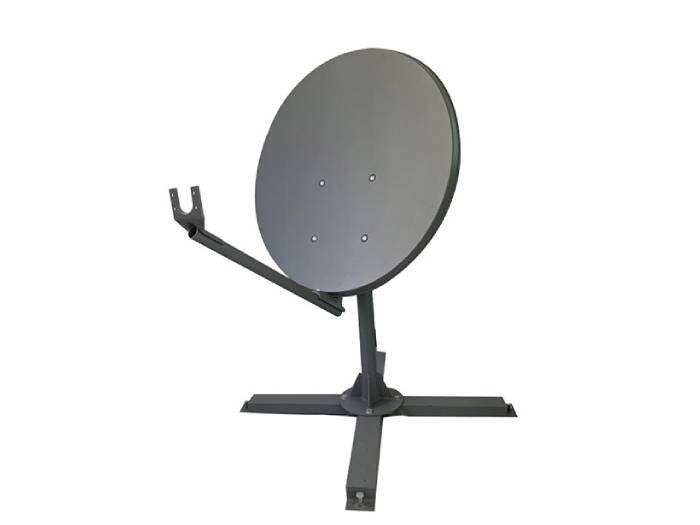Jan. 21, 2021
Since the United States established the International Satellite Communications Organization in 1964 and launched the first commercial communications satellite the following year, Satellite Communications Technology has developed vigorously. As a supplementary communication method for terrestrial communications, satellite communications have achieved great success and satellite communications have become An indispensable part of people's lives.
VSAT technology era
In the early days of satellite communication technology, the very small aperture terminal (VSAT) solved the limitation of antenna size and cost on the development of satellite communication, which also determines that the basic topology of the antenna system is composed of a large central station and a large number of small aperture antenna terminals. A star network in China uses the high G/T value of the central station antenna to make up for the weak point of insufficient link margin caused by the small antenna of the small station. The early satellite communication system based on VSAT was a narrowband communication system in which the communication frequency band was concentrated in the L, S, and C bands.
With technological progress and the improvement of people's living standards, the demand for broadband satellite communications has emerged. Due to the limited bandwidth resources of the L, S, and C frequency bands and the increasing shortage, foreign countries began to study the Ka-band broadband satellite communication technology in the 1980s and 1990s. In 2005, Wild Blue Communications Corporation of the United States successfully launched the world’s first Ka-band broadband communications satellite and piloted applications. Since then, the Ka-band broadband communications satellites in various countries have begun to move towards Qualcomm with larger system capacity, smaller user terminals, and higher service rates. Development in the direction of quantity.

VSAT Antenna
The era of multi-beam antenna technology
Due to the insufficient flexibility of the VSAT Antenna System and the inability to use frequency reuse technology to improve spectrum efficiency, the development of satellite communication antennas has turned to multi-beam antennas. The Multiple Beam Antenna has developed rapidly since 2000. Because it can achieve high-gain spot beam coverage and frequency reuse in a wide area coverage, it has been widely used in satellite communication antenna systems.
Multi-beam antenna is different from digital beamforming. It uses a large number of spot beams to achieve wide-area coverage. The available bandwidth is divided into many sub-bands, so that each sub-band can be multiplexed between a large number of spatially independent spot beams. Similar to the ground cellular communication network, it significantly increases the spectrum utilization rate and satellite communication capacity. Multi-beam antenna technology improves the power efficiency of the transponder and the utilization rate of spectrum resources. It is a key technology to develop large-capacity satellite communication systems and enhance the competitiveness of the satellite communication market. The era of high-throughput communication satellites follows.
Narrowband satellite communication VS broadband satellite communication VS high-throughput satellite communication
From the early narrowband satellite communication system to realize basic satellite communication, to Ka broadband satellite communication, marked by the Ka frequency band, large capacity, and providing broadband Internet access, it opened up new services for satellite Internet access, and now it uses multi-spot beams. With high-throughput communication satellites marked by frequency reuse and high beam gain, the communication capacity has been greatly expanded by allocating frequency spectrum and the number of times the frequency is taken, opening a new era of satellite communication.
High-throughput satellites have become the mainstream of broadband satellite communications. High-throughput communication satellites have greatly increased capacity and reduced unit bandwidth costs under the same frequency resources. The single capacity can reach tens of Gbps to hundreds of Gbps. Communication capacity is several times or even dozens of times higher than traditional communication satellites
List of mainstream satellite communication systems in the market
The development of satellite communication technology and the demand for communication capacity have promoted the evolution of satellite communication from narrowband to broadband, and towards today’s high-throughput era. As an important link between the underlying satellite antenna and the upper-layer communication applications, satellite communication systems are constantly evolving. Combining my two participations in the China Satellite Application Conference in 2016 and 2017 and my usual attention, the current mainstream satellite communication systems on the market are sorted out as follows. Some systems have insufficient information and need to be further improved.
+86 186 0112 5035
+86 010 6766 0352
RV World, Changyang Town, Fangshan District, Beijing, China
Keywords
Follow Us
